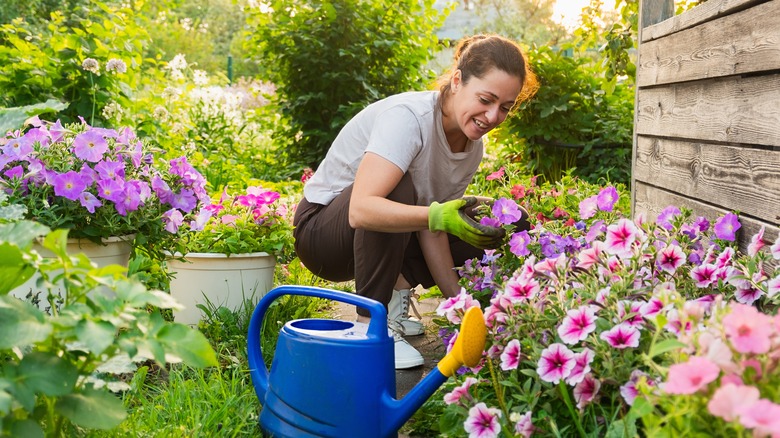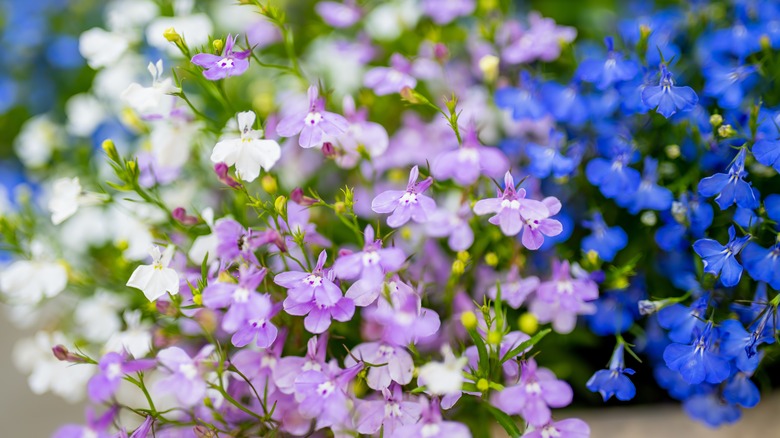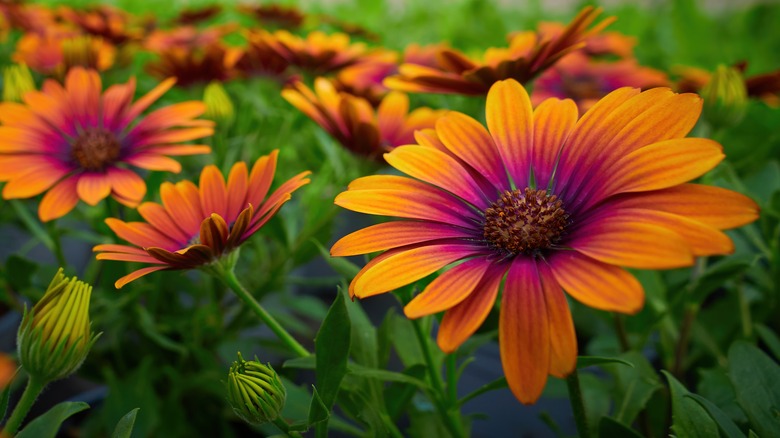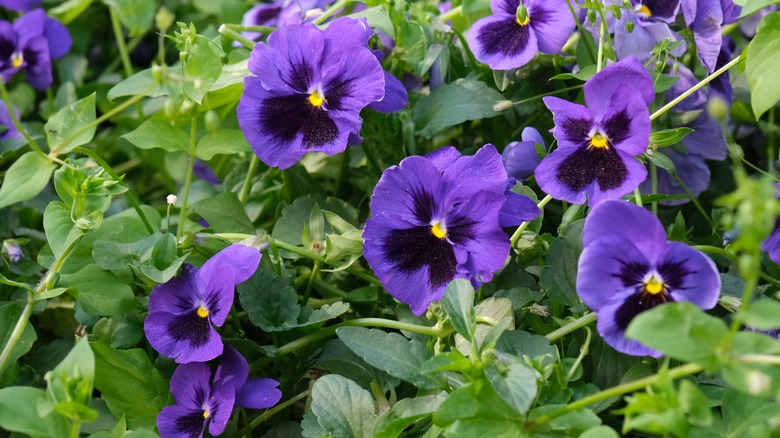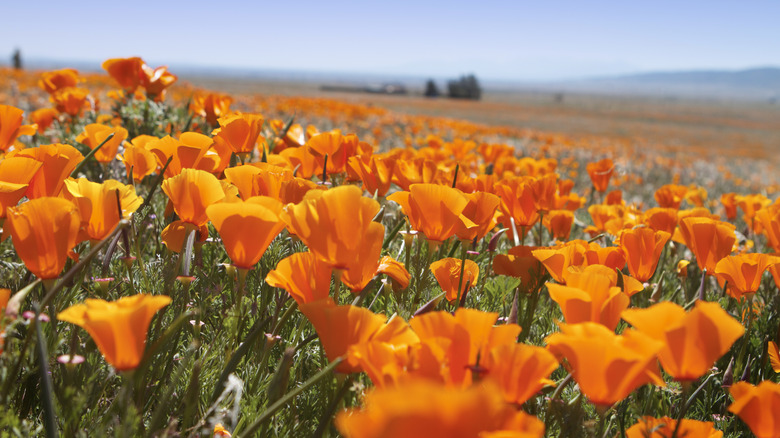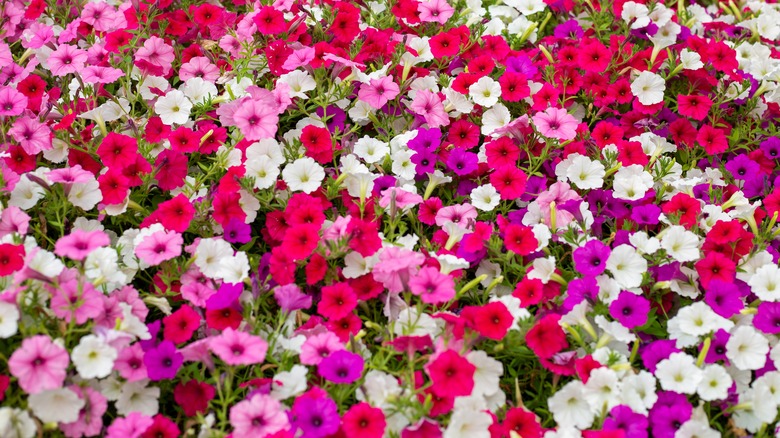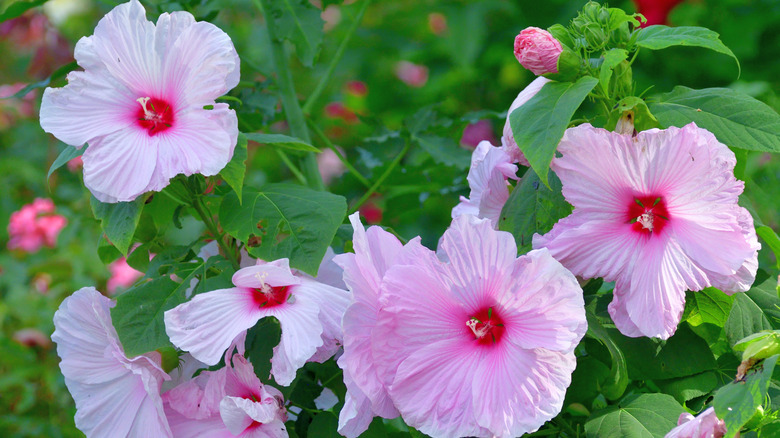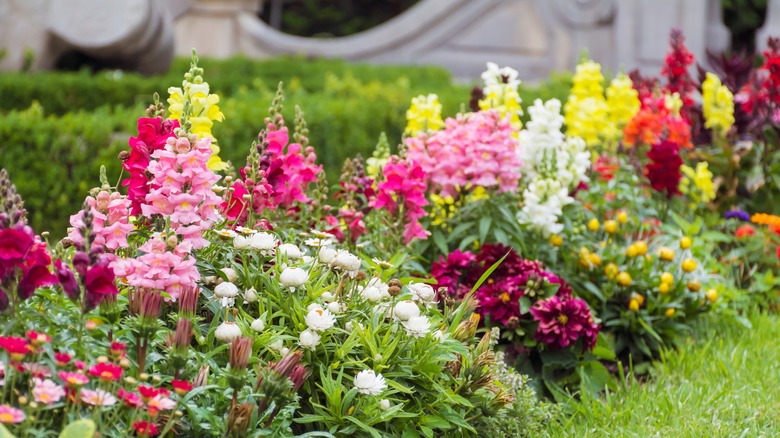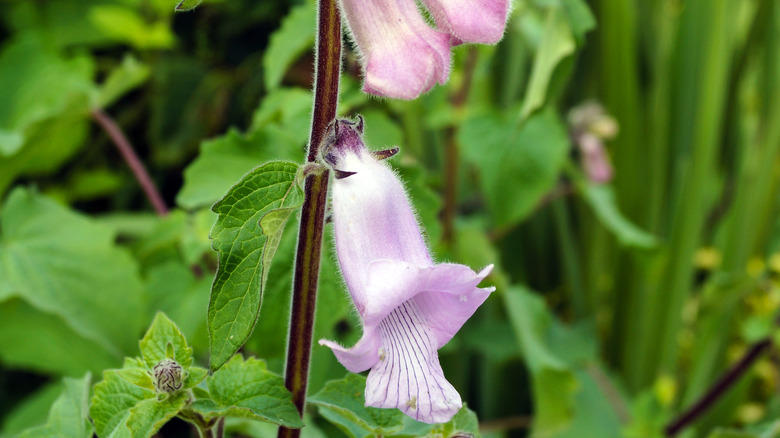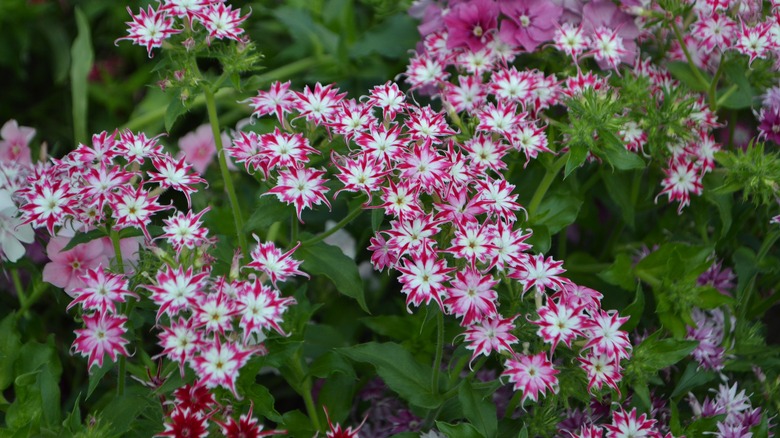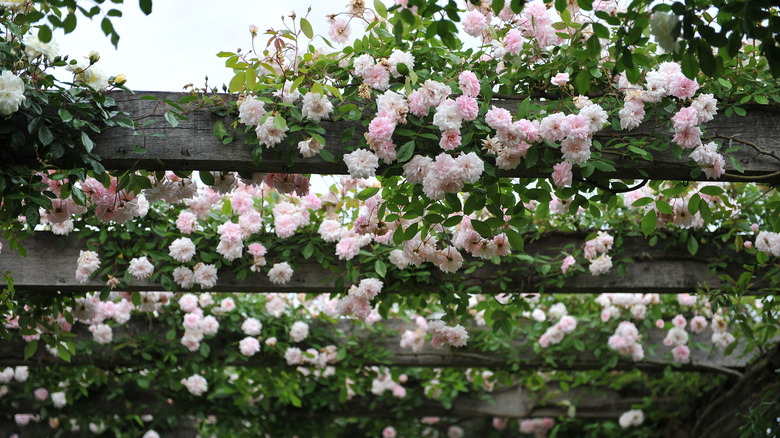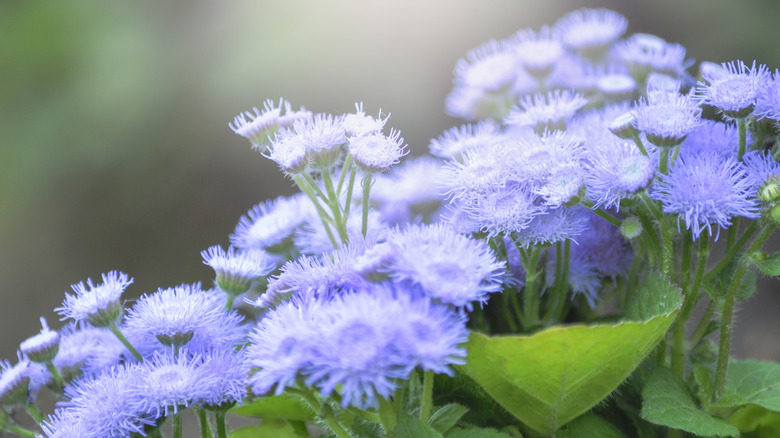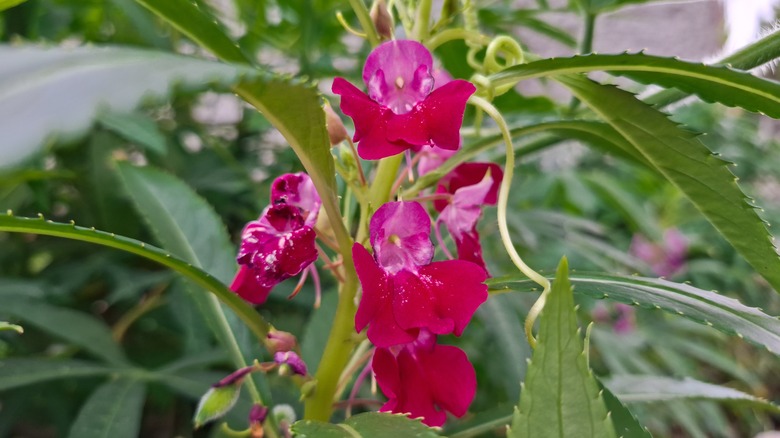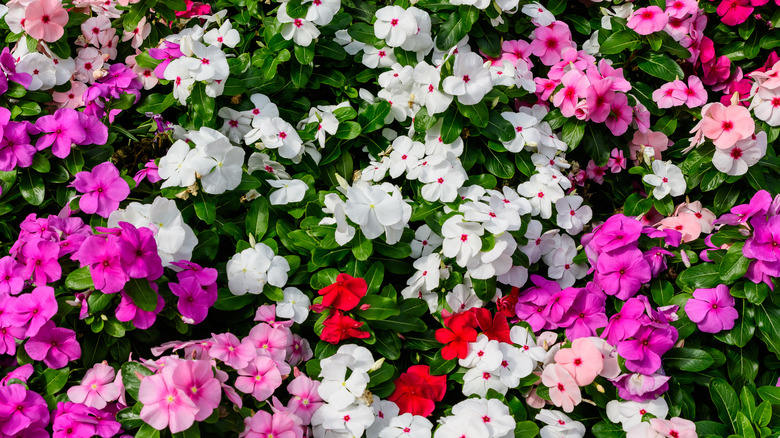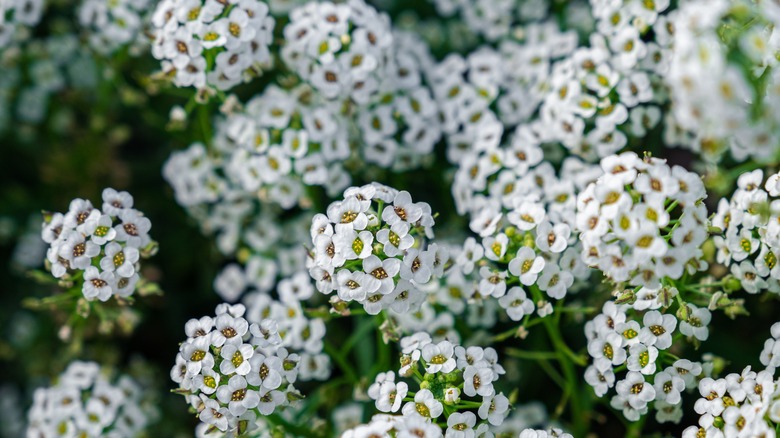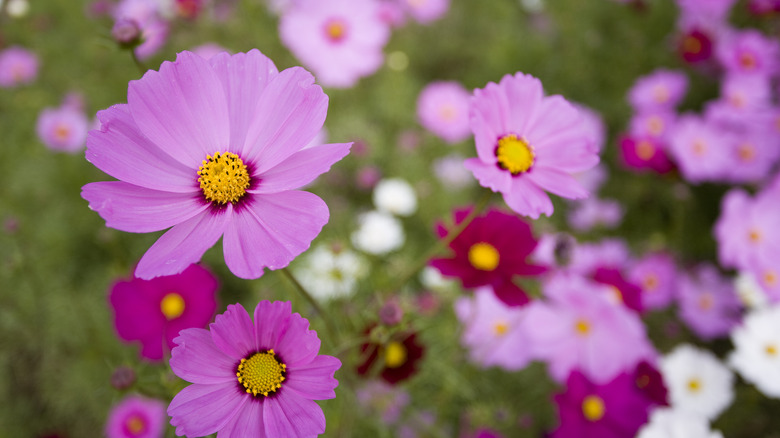Beautiful Spring Annuals That Will Turn Your Garden Into A Colorful Showstopper
Spring brings bright blooms and aromatic flowers to the garden. If you're looking revamp your garden, consider planting annuals that will liven things up. provide color throughout the season, so they're great if you want showstopping blooms outside your doors. Annuals have to be replanted yearly, so they're a good option if you want to change your garden from year to year. Because of their ease of planting, annuals are also good for container gardens.
Most annuals require similar care, such as watering daily and deeply. To properly water your annuals, it's best to water the soil and prevent the petals from getting wet. Most annuals also benefit from cutting off older blooms or trimming to the base for new flowers to grow. These cut flowers can be used in bouquets.
To grow annuals in your garden, you can use seeds or transplants. Growing annuals from seeds is a longer process. Seeds tend to take between 50 and 90 days to bloom, depending on the variety. In many cases, it's best to start the seeds indoors and then plant them outside when it is warmer. With transplanting annuals, you're planting flowers that have already begun to grow or bloom. Whether you're planting seeds or seedlings, plant them in the ground after the last frost to ensure it is not damaged by cold temperatures. There are many annuals that can add more color to your garden or give it a new look.
Lobelia
Providing bright blue blooms, lobelia is a favorite among gardeners for its rare color. However, lobelias can also be pink, purple, or white. The annual variety is usually referred to as dwarf lobelia. This flower grows easily in USDA hardiness zones 9 through 11 and blooms from spring to fall. Many gardeners use lobelias as edging for paths and borders and they are also popular in window boxes and container gardens. Lobelias require four to six hours of direct sun a day and prefer well-draining soil that is slightly acidic.
African daisies
African daisies (Osteospermum) are related to and look like the daisies many people know and love. These flowers grow in pink, purple, white, blue, and yellow petals and typically have a central disc that is dark blue or purple. African daisies can grow between one to three feet tall and tend to first bloom in late spring to early summer in hardiness zones 10 and 11 and continue to bloom into the fall. They like full sun and well-draining acidic soil. As an added bonus, they can attract bees and butterflies to your garden.
Pansies
Pansies are a common springtime flower that you'll see in residential gardens and public spaces. Pansies (Viola x wittrockiana) are a type of viola and belong to the violet family. They come in a variety of colors including blue, pink, yellow, orange, purple, red, and white, and can also be multicolored. Pansies are often used in containers and traditional gardens, blooming from the spring into fall. They grow into hardiness zones 3 through 8 in rich soil with full or partial sun. Pansies are also edible, so you can trim them and use them as garnishes on meals.
California poppy
Iconic for its bright orange-yellow blooms, the California poppy (Eschscholzia californica) is a stunning way to add color to your garden. It is native to the American West, specifically California and Mexico. California poppies grow in well-draining, slightly sandy acidic soil where they will receive full sun. They will thrive in hardiness zones 6 through 10 and can grow between four and twelve inches tall. California poppies are quite drought tolerant and thus don't need a ton of watering, so they're a good low-maintenance flower option for a garden.
Petunia
Petunias are another common spring flower variety. The many varieties come in shades of red, white, pink, purple, blue, yellow, and some multi-color varieties. Petunias can be grown in containers as well as in the ground. These flowers will do well in full sun for at least five or six hours a day and prefer well-draining soil. Where you plant petunias will determine how much water they need. In-ground varieties will tolerate a deep soak once a week, while hanging baskets and container petunias may need watering daily. Petunias can thrive in most hardiness zones as an annual.
Rose mallow
Mallows are a species family of flowering plants that are generally low-maintenance and bloom throughout the summer. Rose mallow (malva trimestris) is the annual variety and grows pink and white funnel-shaped flowers. They require full sun, evenly moist soil, and can grow between 18 to 24 inches tall. Rose mallow prefers daily watering or twice daily in hotter, drier weather. With an appearance similar to hibiscus, this can be a great option to bring a tropical vibe to a garden.
Snapdragons
There are few flowers that offer as stunning colors as snapdragons (Antirrhinum majus). These flowers come in a variety of shades of pink, peach, purple, yellow, orange, and red, as well as multi-colors. These flowers grow in clusters, creating a beautiful texture for a garden or bouquet. They prefer well-draining soil with a neutral pH and planted in full sun. However, planting them in partial shade with plenty of water will help them continue to bloom through the heat of the summer. Snapdragons will thrive in hardiness zones 7 through 11.
South African foxglove
South African foxgloves (Ceratotheca triloba) are different from the traditional foxglove flowers. If you're looking for a bloom that will give your garden some uniqueness, this is it. The tube-shaped blooms come in light purple, pink, and white varieties. South African foxgloves are relatively easy to grow from seeds. These flowers can withstand a variety of soil types as long as it's well-draining. Regular watering with periods to dry out in between is preferred. Full sun to partial shade will help the blooms thrive, with shade from the afternoon sun preferred in hotter climates.
Annual phlox
Phlox is another common flower family that you'll often see in yards. Annual phlox (Phlox drummondii) have bright red, pink, or white flowers and can grow up to 20 inches tall, though they usually end up around 6 to 12 inches tall. They like to be planted in slightly acidic soil and receive sun and partial shade. Annual phlox will thrive best in sandy soils. Because they're native to part of the South Western and South Eastern United States, they require lower amounts of water. These trumpet-shaped flowers also attract butterflies throughout the spring.
Cécile Brünner climbing rose
If you're looking for an annual that will climb on trellises, look no further than the Cécile Brünner climbing rose (Rosa "Cécile Brünner'). These trailing flowers can grow between 10 and 20 feet tall and thrive in hardiness zones 5 through 9. They prefer to be planted in well-draining humus soil and receive full sun or partial shade. This pretty and fragrant rose variety comes in a pale pink that blooms in the spring and early summer. They'll be great to use on a trellis on the side of a home or on a pergola to add stylish shade.
Floss flower
Related to asters, floss flowers (Ageratum houstonianum) grow in dense clusters of spikey flowers that range from pale blue to dark blue-purple. Floss flowers thrive in hardiness zones 2 through 11 and can grow between 1 and 3 feet tall. They require well-draining soil and prefer to be planted where they will receive full sun but will also tolerate partial shade. Water thoroughly and allow the ground to dry out before watering again. Floss flowers will attract butterflies and other pollinators to your garden and also make great additions to cut bouquets because of their unique texture.
Balsam
Balsam (Impatiens balsamina) has become an uncommon flower for gardens. However, the trumpet-shaped flowers that come in tight clusters are the perfect colorful addition. These flowers come in pink, red, purple, and multi-colored varieties and can grow between 12 and 36 inches tall. Balsams are easy to grow in containers or in the ground. Balsam thrives in hardiness zones 2 through 11. They prefer partial shade where they will be out of the afternoon sun. Balsam will attract bees, hummingbirds, and other pollinators, so they're beautiful and helpful flowers for a garden.
Busy Lizzies
Another impatient variety, Busy Lizzie (Impatiens walleriana) is a more common annual for gardens. Busy Lizzies are small flowers that range in height from 6 inches to 2 feet tall in shades of pink, red, peach, and apricot. They're very heat-sensitive and will thrive in hardiness zones 10 and 11. They grow quickly and prefer part or full shade that will prevent the leaves from burning. Busy Lizzies can grow in well-draining soil but don't like to dry out too much, so frequent watering is a good idea to prevent wilting.
Sweet alyssum
Sweet alyssum (Lobularia maritima) is most commonly used in garden beds as edging and borders. It grows between 3 and 9 inches tall in tight flower clusters and thrives as an annual in hardiness zones 5 through 9. Colorful varieties come in pink or lavender but are also available in white. Sweet alyssum will thrive in full sun, but partial shade is better in hot climates. This flower isn't too picky about soil type as long as the soil drains well. Sweet alyssum will look great in a container, especially when allowed to flow over the edge.
Cosmos
A popular garden and wild flower, cosmos are a stunning annual to have in your collection. The plant can grow up to six feet tall, so they're a great way to add height to a garden. Cosmos come in red, orange, yellow, pink, and maroon. Plant them in well-draining neutral or alkaline soils in full sun. They can be drought-tolerant, but you should still water them regularly. Because they're an easy-growing flower, cosmos thrive in a wide variety of hardiness zones, specifically 2 through 11. Cosmos are also a great flower to cut for a summer bouquet.
